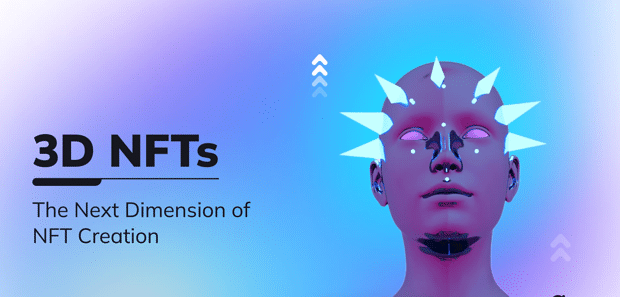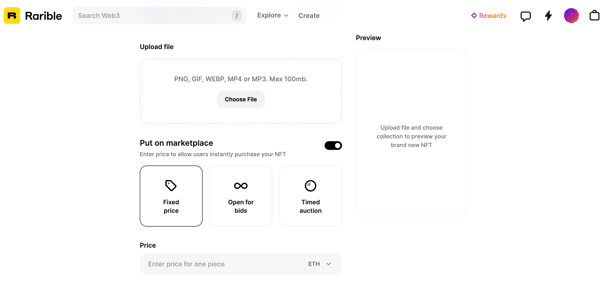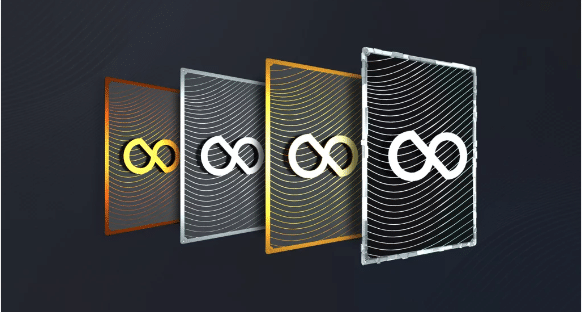
If you’ve been in the NFT space for some time, you know that NFTs or non-fungible tokens can be anything from photos and videos to tweets and, yes, 3D models. 3D NFT models are the latest trend in digital asset ownership. They are unique, immutable, and non-fungible digital assets that enable anyone to securely own and trade digital assets in a new way. The step up from 2D to 3D NFTs promises to grow the NFT industry by appealing to a wider audience and integrating with various Metaverses. In this article, we dive deep into the world of 3D NFTs to know what they are, how they are created, and how you can use them to your advantage.
How do 3D NFTs Work?
3D NFTs are created using 3D modeling tools such as 3D Studio Max and Blender, and stored on the blockchain, which makes them secure, immutable, and transparent.
To own a 3D NFT, you must have a digital wallet that supports the creation and trading of 3D NFTs. The wallet will store your NFTs, making it easy for you to trade the NFTs with others and view their ownership on the blockchain. To trade your 3D NFT, you only have to send it from your wallet to the buyer’s wallet.
Types of 3D NFTs
3D NFTs can be created from any of the following assets:
Digital art
The most common use of NFTs so far has been to create digital art. This is done to create NFT collections from art or help digital artists add transparent ownership and royalties to their work.
Digital artists are now using 3D NFTs to create more striking artworks for NFT collections or high-priced 1-of-1 pieces.
Access Keys
Access keys are not new, but 3D NFTs have introduced a new way of displaying them. Previously, a digital access key would exist in the form of a link or a code. However, with NFTs, they can be in the form of a digital key, ticket, pass, or whatever you like since NFTs can represent anything.
You can read this blog to understand how NFT ticketing works.
This has created a host of new possibilities around access and ticketing. 3D models of digital access keys and tickets can have the same utility as they had previously, but with a high level of collectability and being more aesthetically appealing.
Digital clothing
To play, socialize, and live in the Metaverse, we need to wear. These are bought and sold in the form of NFTs, another use case of the NFT 3D technology.
Most brands in the fashion industry have already entered into web3 as providers of wearable NFTs. From streetwear brands like Nike and Adidas to luxury brands such as Gucci and Louis Vuitton, almost every major brand in the fashion industry has tried to enter the Metaverse with their own NFT clothing ranges.
Some of the brands have gone bigger than others. For example, in 2021, Nike acquired digital sneaker creators, RTFKT, for more than $1 billion in an attempt to crack the Metaverse.
Virtual land
Much of the conversation around the Metaverse is about play-to-earn (p2E) gaming and the transition from web2 to web3 gaming.
The P2E gaming model enables gamers to own in-game assets as NFTs in the form of NFTs. Land is one of the most common in-game assets.
2D land would have been suitable in traditional games, and this explains why gaming was one of the first industries to adopt web3 and NFTs.
How to Create a 3D NFT
The good thing is that if you have skills in 3D design and rendering, there is not much to learn to turn your work into a 3D NFT.
NFT marketplaces such as OpenSea and Rarible will do most of the work for you. On Rarible, for example, you only have to connect your crypto wallet, click Create, choose a blockchain, and upload your file in one of the supported file formats. For a 3D NFT, you can upload the file in formats such as PNG, GIF, MP4, or WEBP.
You will then have to decide on the price of the NFT, the expiry date of the listing, and the royalty percentage. Finally, you click the Create item button and Rarible will complete the rest for you.

However, most artists release their 3D NFTs as a collection. This can involve thousands of NFTs that when put together make a collection. Creating 10,000 individual 3D NFTs is time-consuming. That is why most collections choose random generation of 3D NFTs using a generative algorithm.
One of the easiest ways to do this is by using the Raptor plug-in for Blender. With Raptor, you can create traits and set a rarity level before generating random combinations of traits. Raptor also generates metadata for each artwork in JSON files plus 3D GLB files for each combination that can be uploaded to NFT marketplaces.
3D NFT Examples
Below are some of the 3D NFTs that you can catch in the NFT market today:
Imaginary Ones
NFT projects such as the CryptoPunks and Bored Ape Yacht Club paved the way for the launch of new NFT collections that doubled as an entrance to a community. Although the two projects made huge sales, many have criticized their artwork, questioning how “bad art” can be valued so highly.
3D NFT projects such as Imaginary Ones use 3D animations to create highly sought-after pieces of digital art that serve as a gateway to a community.
Beeple: CROSSROAD
Beeple is the most famous NFT artist in the world, and he has used 3D design to create artwork that physical creations cannot compete with (Learn more about Beeple and his legendary artworks here). CROSSROAD, one of his popular NFTs, was based on the outcome of the last US presidential election.
The 3D NFT featured former US President Donald Trump lying face down covered in graffiti, although it would have looked different had Trump won the 2020 election.
The NFT 3D piece was sold for $6.6 million in the secondary market in February 2021.
Otherside
Otherside is owned by Yuga Labs and it was one of the most popular NFT projects to introduce land parcels to the Metaverse. The project raised $320 million from its first land sale.
Yuga Labs is leading the way when it comes to combining NFTs and Metaverse gaming. NFT land parcels represent the ownership of a digital plot of land in the game, while Bored Ape owners can use 3D renderers of their apes to explore the virtual world.
Launchpool access key
Launchpool is a well-known crypto IDO Launchpad in the web3 space. It gives crypto projects a new way to get off the ground while at the same time making early-stage investment accessible to all.
To reward their token holders, Launchpool launched 4 tiers of Launchpool Labs NFTs, all offering different levels of access on their platform.

Dolce & Gabbana Collezione Genesi
Dolce & Gabbana is one of the most successful fashion brands that have entered the world of digital clothing collections.
D&G raised over $6 million from a collection of 9 NFTs of digital wearables, with the Doge Crown being the most expensive one, a Metaverse crown sold for $560,000, allowing the owner to claim a physical version of the crown.
Buy and Sell NFTs for a Profit
You can grow your crypto earnings by buying NFTs and selling them for a profit. NFTCrypto.io has made this even easier for you via their NFT signals trading system. They find profitable flips in the NFT market and share the signal with you in real time. Join NFT Signals now and become a successful NFT trader. The platform users have so far earned a total group profit of over $1 Billion.
